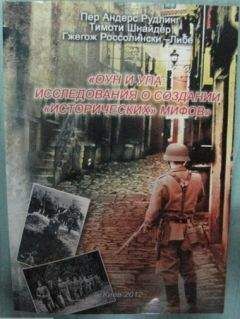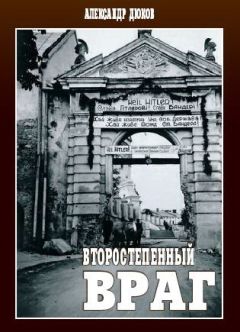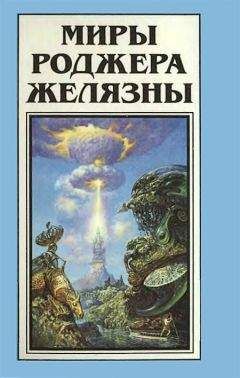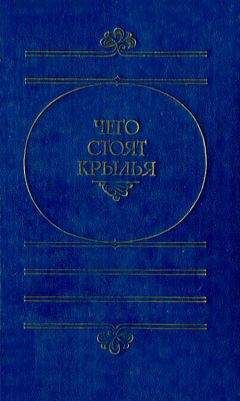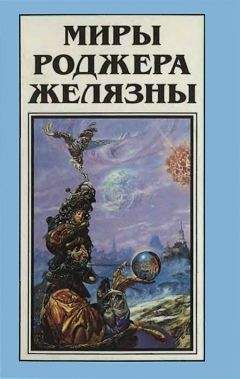518
TsDAVOV f. 3833, op. 1, spr. 9, 11. 1, 3 (Copy of the minutes of the meeting of the Administration of Ukraine). Ukrainian postavyty spravupo nimets "ky. Ibid., 1.1. For a very similar statement about dealing with the "non-Ukrainians" in "Ukraine," see ibid., spr. 69, 1.36.
On the pogroms in western Ukraine, see Dieter Pohl, "Anti-Jewish Pogroms in Western Ukraine-A Research Agenda," in Shared History-Divided Memory: Jews and Others in Soviet-Occupied Poland, 1939–1941, ed. Elazar Barkan, Elizabeth A. Cole, and Kai Struve (Leipzig: Leipziger Universitatsverlag, 2007), 305-13; and Gabriele Lesser, "Pogromy w Galicji Wschodniej w 1941 r," in Ternary polsko-ukrainskie, ed. Robert Traba (Olsztyn: Wspolnota Kulturowas Borussia, 2001), 103-26. Similar waves of pogroms also broke out shortly after the start of the German-Soviet war in northeastern Poland and in Lithuania. For pogroms in Poland, see Andrzej Zbikowski, "Pogroms in Northeastern Poland-Spontaneous Reactions and German Instigations," in Shared History-Divided Memory, 315-54. For pogroms in Lithuania, see Christoph Dieckmann, "Lithuania in Summer 194l-The German Invasion and the Kaunas Pogrom," in Shared History-Divided Memory, ed. Barkan, Cole, and Struve, 355-85.
The pogrom started on 30 June 1941 or even before. For testimonies that date the beginning of the violence to 1 July 1941, see Kurt I. Lewin, Przezytem: Saga Swietego Jura spisana w roku 1946(Warszawa: Zeszyty literackie, 2006), 56–57; and ZIH 229/54, Teka Lwowska, 1.2. For the course of the pogrom in L'viv, see Christoph Mick, "Ethnische Gewalt und Pogrome in Lemberg 1914 und 1941," Osteuropa 53, 12 (2003): 1810-11, 1824-29; Hannes Heer, "Einubung in den Holocaust: Lemberg Juni/Juli 1941," Zeitschrift fur Geschichtswissenschafi 49 (2001): 410, 424; Bruder, Den ukrainischen Staat erkampfen oder sterben, 140-50; Grelka, Die ukrainische Nationalbewegung, 276-86; Dieter Pohl, Nationalsozialistische Judenverfolgung in Ostgalizien 1941–1944: Organisation und Durchfuhrung eines staatlichen Massenverbrechens (Munich: Oldenbourg, 1997), 60–62; and Wachs, Der Fall Theodor Oberlander (1909–1998), 71, 78–80. For posters and other OUN-B propaganda in L'viv during the pogrom, see Jan Rogowski, "Lwow pod znakiem swastyki: Pamietnik z lat 1941–1942" (unpublished manuscript) in Zaklad narodowy im. Ossolinskich in Wroclaw, 16711/II, 10; Lewin, Przezylem, 65; Eliyahu Yones, Die Strasse nach Lemberg: Zwangsarbeit und Widerstand in Ostgalizien 1941–1944 (Frankfurt am Main: Fischer Taschenbuch, 1999), 18; and Diukov, Vtorostepennyi vrag, 47–52. According to Diukov, some soldiers of the Nachtigall battalion participated in the violence in L'viv as well (Vtorostepennyi vrag, 71–72). Eyewitnesses saw soldiers from the Nachtigall battalion beating Jews on 1 July in the yard of the prison on Zamarstynivs'ka Street (AZIH, 30/12242, Zygmunt Tune, 1; Lewin, Przezytem, 61).
Mick, "Ethnische Gewalt und Pogrome in Lemberg 1914 und 1941," Osteuropa 53, 12 (2003): 1825. During this pogrom, 4,000 Jews were killed. In addition, on 5 July, between 2,500 and 3,000 Jews were shot by the German task forces. Cf. Pohl, Nationalsozialistische Judenverfalgung in Ostgalizien 1941–1944, 61, 69. Between 25 and 28 July 1941 another pogrom, dubbed the "Petliura days," occurred in L'viv. Several hundred Jews were killed, mainly by Ukrainian militiamen and Ukrainian peasants who came to L'viv from adjacent villages to take part in the violence. Cf. AZIH, 301/230, Jakub Dentel, 2; AZIH, 301/1864, Salomon Goldman, 5; AZIH, 301/4654, Henryk Szyper, 11; AZIH, 301/1584, Izak Weiser, 1; AZIH, 302/26, Lejb Wieliczker, 21; AZIH, 301/4944, Jan Badian, 1–6; AZIH, 301/1117, Leonard Zimmerman, 1; AZIH, 301/1801, Henryk Baldinger, 1–4; and AZIH, 301/2278, Lucyna Hallensberg, I.
Dieter Pohl, "Anti-Jewish Pogroms in Western Ukraine," in Shared History-Divided Memory, ed. Barkan, Cole, and Struve, 306.
TsDAVOV f. 3833, op. 2, spr. 1, l.32.
Ibid., ll. 62, 64. All Ukrainian men between 18 and 50 who were obliged to join the militia were to have been divided into professional militiamen who were employed full-time and reserve forces ("volunteer members"-chleny-dobrovol'tsi) who earned a living elsewhere but could be mobilized at any time.
Ibid., l.62.
For the activities of the Ukrainian militia during the pogrom, see Yones, Die Strasse nach Lemberg, 18–19; AZIH, 301-1809, Jaroslaw Korczynski (Zeznania ocalalych Zydow), 1; AZIH, 301/4654, Henryk Szyper, 6; AZIH, 301/1864, Salomon Goldman, 1; AZIH 229/22, Maurycy Allerhand (Teka Lwowska), 1; and AZIH: 229-54, Teka Lwowska, 1. For general accounts of the Ukrainian police forces during World War II in Ukraine, see Dieter Pohl, "Ukrainische Hilfskrafte beim Mord an den Juden," in Die Tater der Shoah: Fanatische Nationalsozialisten oder ganz normale Deutsche? ed. Gerhard Paul (Gottingen: Wallenstein, 2002), 202-34; and Gabriel N. Finder and Alexander V. Prusin, "Collaboration in Eastern Galicia: The Ukrainian Police and the Holocaust," East European Jewish Affairs 34, 2 (2004): 95-118. For information on German assistance in anti-Jewish measures, see Patryliak, Viis "kova diial "nist" OUN (B) u 1940–1942 rokakh, 232.
TsDAVOV f. 3833, op. 2, spr. 1, ll. 60, 62.
On the antisemitism of the OUN-B leader Iaroslav Stets'ko, see Karel C. Berkhoff and Marco Carynnyk, "The Organization of Ukrainian Nationalists and Its Attitude toward Germans and Jews: Iaroslav Stets'ko's 1941 Zhyttiepys," Harvard Ukrainian Studies 23, ¾ (1999): 149-84. For the activities of the Ukrainian militia, see Pohl, Nationalsozialistische Judenverfolgung in Ostgalizien, 46.
TsDAVOV f. 3833, op. 1, spr. 12, l. 10 (Telegram of Iaroslav Stets'ko to Stepan Bandera, no. 13, 25.6.1941).
U.S. Holocaust Memorial Museum, Record Group (USHMM RG) 31.018M, reel 20; Upravlinnia sluzhby bezpeky Ukrainy v Rivens'kii oblasti (USB v Rivens'kii oblasti), no. 19090, t. 3, ll. 3, 3v., 100, 101. On the militia, see also Pohl, Nationalsozialistische Judenverfolgung in Ostgalizien, 46.
According to Dmytro Honta, the printer of the posters, ten Jews were forced to help print the propaganda posters: see his "Drukarstvo Zakhidnoi Ukrainy pidchas okupatsii," Konkurs na spohady, Oseredok Ukrainian Cultural and Educational Centre Winnipeg, ll. 14–16. Some of the posters are in the collection of TsDAVOV. See TsDAVOV f. 3822, op. 1, spr. 63, ll. 112-14.
"Akt prohloshennia Ukrains'koi derzhavy," Samostiina Ukraina, 10 July 1941, 1.
"Sviatochna akademiia," Ukrains'ke slovo, 24 July 1941, 1.
BA Berlin-Lichterfelde: NS 26/1198, ll. 1–5, 10.
Ibid., ll. 9-12.
The OUN-B member Volodymyr Stakhiv sent to "Your Excellency" Adolf Hitler on 23 June 1941 an official letter in which he informed Hitler that the OUN believed that the Jewish-Bolshevik impact on Europe would soon be checked and that the "recreation of an independent national Ukrainian state in the terms of the Brest-Litovsk peace treaty will stabilize the national [volkisch] New Order." In the name of the OUN leader Stepan Bandera, Stakhiv also sent out a memorandum about the resolution of the Ukrainian question. See Bundesarchiv Koblenz R 43 II (Reichskanzlei)/1500, l. 61, memorandum on ll. 63–77. The OUN-B member Rikhard (Riko) Iaryi also sent a telegram from Vienna to Berlin; he assured Hitler of the OUN-B's loyalty, its readiness to struggle together with the "glorious German Wehrmacht" against "Muscovite Bolshevism," and its willingness to mobilize more Ukrainians living in Germany who could fight for the "liberation of Ukraine" and "finish with the chaos in Eastern Europe." See TsDAVOV f. 3833, op. 1, spr. 22, l. 10.
BA Berlin-Lichterfelde: NS 26/1198, ll. 12–14.
Bruder, Den ukrainischen Staat erkampfen oder sterben, 135.
Ibid., 137. Franziska Bruder, "'Der Gerechtigkeit dienen': Die ukrainischen Nationalisten als Zeugen im Auschwitz-Prozess," in Im Labyrith der Schuld: Tater-Opfer-Anklager, ed. Irmtrud Wojak and Susanne Meinl (Frankfurt am Main: Campus, 2003), 138, 148.
Diukov, Vtorostepennyi vrag, 66.
Ievhen Stakhiv, Kriz' tiurmy, pidpillia i kordany (Kyiv: Rada, 1995), 99-100.
BA Berlin-Lichterfelde, R 58/217, Ereignismeldungen UdSSR, Berlin, 10 September 1941, no. 79, 1. 10; Berlin-Lichterfelde, R 58/216, Ereignismeldungen UdSSR, Berlin, 9 September 1941, no. 78, 1. 355.
TsDAVOV f. 3833, op. 1, spr. 29–35.
There are only four letters in the Politische Archiv des Auswartigen Amtes, R 105191 (Akten betreffend Ukraine: Lage der Volksdeutschen. Gebietsanspriiche Rumaniens. Ukr. Nationalbewegung, Denkschrift z. Entwicklung d. ukr. Gebiete). I cannot say how many letters were actually sent to Berlin.
For example, TsDAVOV f. 3833, op. 1, spr. 29, l. 4 (Letters from Iavlon'ka, Raznychi, and Tel'chi).
For example, ibid., spr. 31, ll. 29–30 (Letter from Steniatyn to Stepan Bandera, 19 July 1941) or spr. 30, ll. 8–9 (Letter from Barani Peretoki to Iaroslav Stets'ko).
Ibid., spr. 31, l. 1. The handwritten letter is titled Zaiava da Uriadu Iaroslava Stets'ka.
Ibid., spr. 29, ll. 2–3 (Resolution from the village of Elblanivka, 13 July 1941). Here and below, these citations are example texts.
Ibid., l. 13 (Letter from the village of Ksaverivka, 19 July 1941).
Ibid., spr. 31, l. 36 (Letter from Steniatyn to Adolf Hitler, 19 July 1941).
Ibid., spr. 29, l. 9 (Letter from the village Ksaverivka to Iaroslav Stets'ko, 18 July 1941).
Ibid., spr. 29.
Letters and telegrams from various places declaring loyalty to the OUN-B government and the new administration as well as several descriptions of celebrations of the proclamation of the Ukrainian state are in ibid., spr. 15.
"Zvit robochoi hrupy istorykiv pry Uriadovii komisii z vyvchennia diial'nosti OUN i UPA," www.ukraine-poland.com/u/publicystyka/publicystyka.php?id=3480 (accessed 24 February 2009); TsDAVOV f. 3833, op. 1, spr. 45, l. 2. See also "Zvit pro robotu v spravi orhanizatsii derzhavnoi administratsii na tereni Zakhidnykh oblastei Ukrainy," TsDAVOV f. 3833, op. 1, spr. 15, ll. 1–4.
TsDAVOV f. 3833, op. 1, spr. 34, l. 40 (Report from the meeting of Ukrainian citizens of Zolochiv district).
Ibid., spr. 45, l. 2 (Ivan Klymiv's report to the leadership of the OUN).
Ibid., spr. 29, l. 1. The text of the letter from the village of Rudnyky was used with small modifications in letters from other places like Omel'no, Kulikovychi, Iavlon'ka, Raznyi, Tel'chi, etc. See ibid., ll. 1, 4–5.
Ibid., ll. 13–14. A list of 80 signatures is affixed to the letter. The same letter was also ad dressed to Iaroslav Stets'ko and signed by 75 people (ibid., ll. 9-12).
Ibid., spr. 31, ll. 29–30, 36–37, 31–32, respectively.
Ibid., l. 36. In another part of the same letter the enemies are called "bestial Asiatics" (zizvirili aziaty).
Ibid.
Regarding plenipotentiaries in 19th-century Galicia and the Habsburg empire, see John Paul Himka, Galician Villagers and the Ukrainian National Movement in the Nineteenth Century (Basingstoke, UK: Macmillan, 1998), 20–21.
TsDAVOV f. 3833, op. 1, spr. 29, ll. 13–14.
Ibid., spr. 31, l. 36.
Ibid., op. 2, spr. 1, l. 85. In the Ukrainian language of the OUN-B, Odyn narid-odyn provid-odna vlada.
Ibid., op. 1, spr. 31, l. 29.
Ibid., spr. 12, l. 15.
Ibid., spr. 31, l. 31.
Ievhen Stakhiv, interviewed by author, Berlin, NJ, 11 November 2008.
